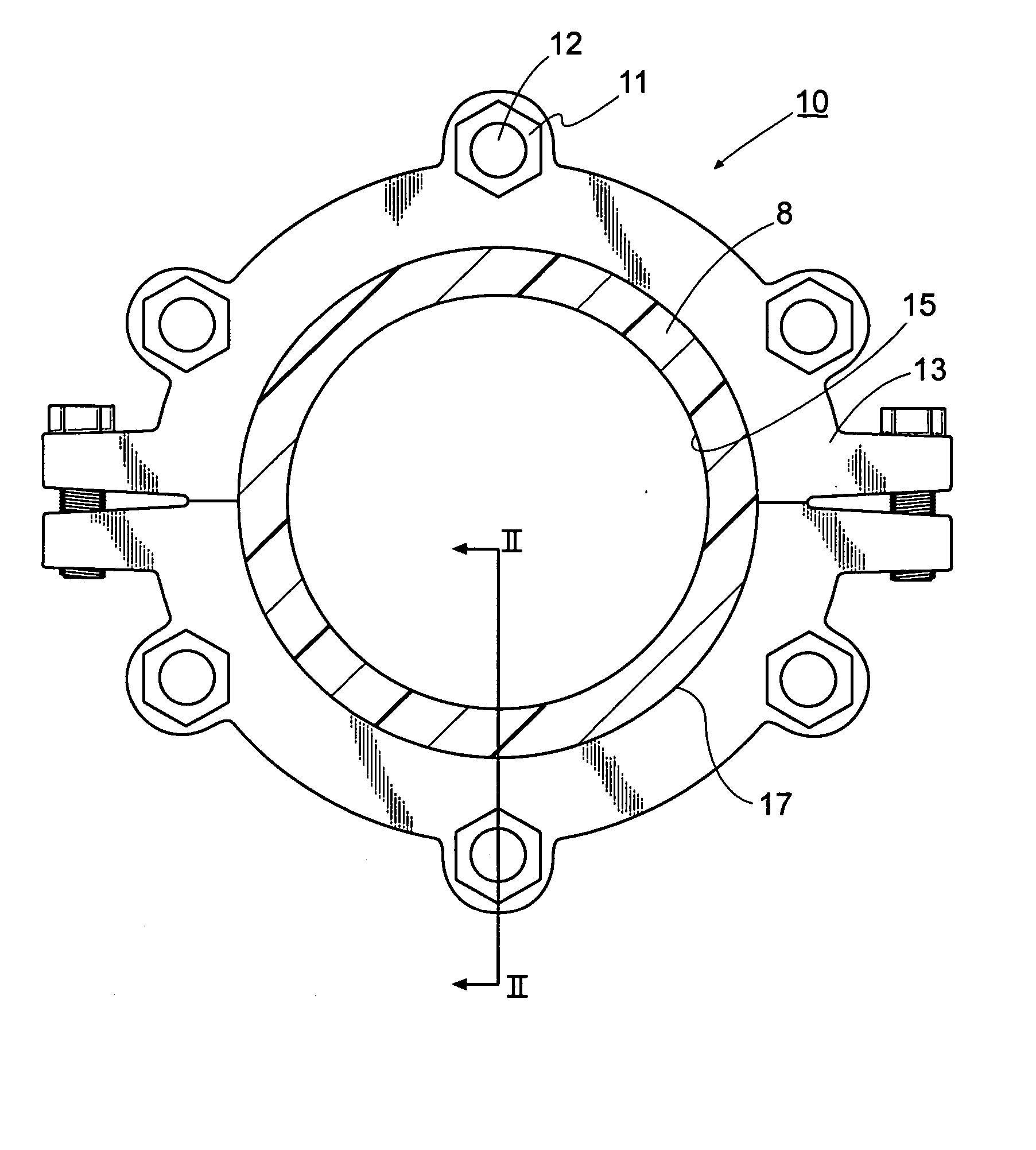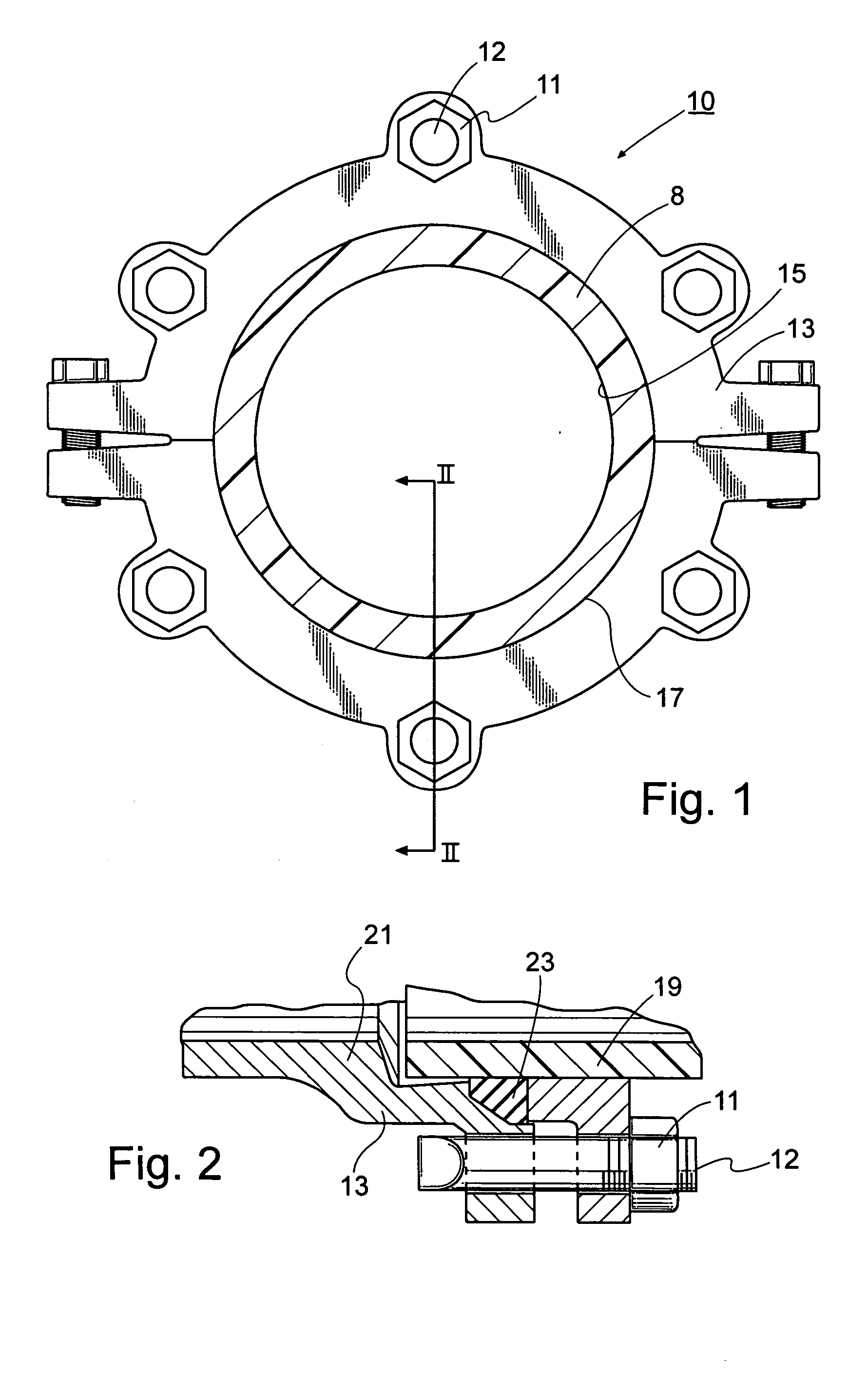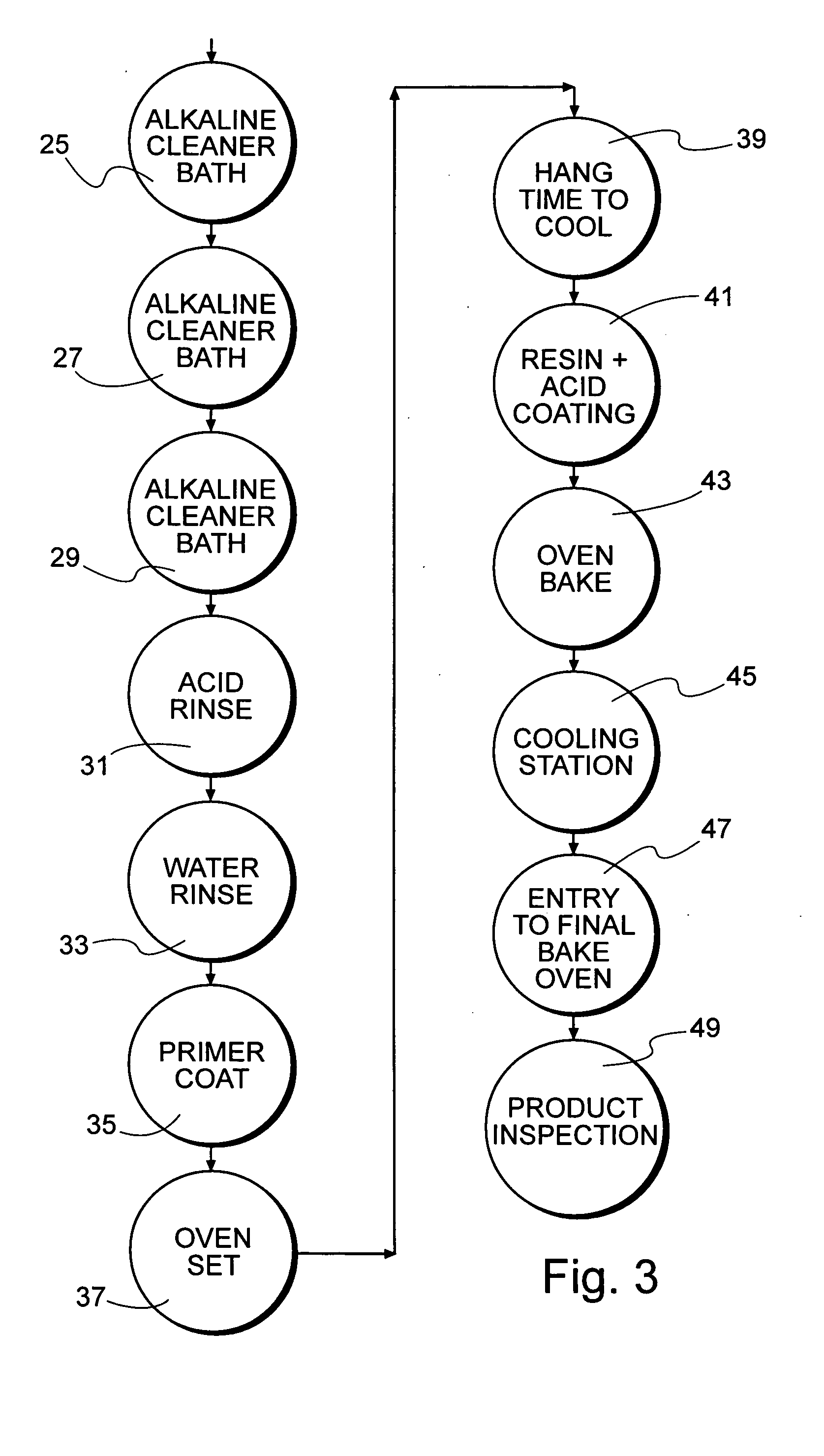Protective coating compositions and techniques for fluid piping systems
a technology of coating composition and fluid piping, applied in the field of piping systems, can solve the problems of rust and corrosion, products are subject to corrosion and degradation in the normal storage and work environment, and are not abrasion resistant, so as to achieve the effect of resisting corrosion
- Summary
- Abstract
- Description
- Claims
- Application Information
AI Technical Summary
Benefits of technology
Problems solved by technology
Method used
Image
Examples
example 1
Preparation of Dispersed Novolak Resin
40 g of 6,7-dihydroxy-2-naphthalenesulfonate, sodium salt (available from Andrew Chemicals), 136 g. of a water soluble resole (made from formaldehyde and phenol, F / P ratio of 2.3, 80% solids and commercially available from Schenectady under the trade designation HRJ11722), 50 g of tert-butyl catechol and 50 g of water were mixed together and steam heated for approximately three and one-half hours until the mixture became very viscous. 220 g of resorcinol and 220 g of water were added followed by 6 g of phosphoric acid in 20 g of water. Steam heating was continued for another 40 minutes. 70 g of formalin then was added while continuing steam heating resulting in a concentrate. The concentrate was filtered and self-dispersed upon the addition of 1730 g of water.
example 2
Preparation of Dispersed Resole Resin
160 g of 6,7-dihydroxy-2-naphthalenesulfonate, sodium salt (available from Andrew Chemicals), 1000 g of the HRJ 11722 water soluble resole, and 50 g of water were mixed together and steam heated for approximately three hours resulting in a very thick concentrate. 3600 g of water was added to the concentrate which then self-dispersed and was filtered.
example 3
Autodepositable Metal Treatment
The following ingredients were mixed together in indicated wet weight grams to obtain an autodepositable coating / primer:
Carbon black 21 gZnO 180 gaqueous resole dispersion of Example 1 400 gPolyvinyl alcohol-stabilized resole (BKUA 2370) 600 gDichlorobutadiene homopolymer (VERSA TL / DOWFAX 450 gstabilized)Water1000 g
The following ingredients were mixed together in indicated wet weight grams to obtain a metal treatment used as an activator composition:
Aqueous novolak dispersion of Example 2 600 gPhosphoric acid 400 gWater2700 g
Description of the Protective Coating Process for Ferrous Metal Piping Systems:
FIG. 1 shows a typical portion of a ductile iron piping system of the type used for fluid conveyance (water, sewage) which would be treated with the coating system of the invention. The piping system 10 includes the ductile iron pipe 8 which is shown at a joint including an external restraining flange or gland 13. The gland 13 is held in place b...
PUM
| Property | Measurement | Unit |
|---|---|---|
| tensile strengths | aaaaa | aaaaa |
| elongation | aaaaa | aaaaa |
| tensile strengths | aaaaa | aaaaa |
Abstract
Description
Claims
Application Information
 Login to View More
Login to View More - R&D
- Intellectual Property
- Life Sciences
- Materials
- Tech Scout
- Unparalleled Data Quality
- Higher Quality Content
- 60% Fewer Hallucinations
Browse by: Latest US Patents, China's latest patents, Technical Efficacy Thesaurus, Application Domain, Technology Topic, Popular Technical Reports.
© 2025 PatSnap. All rights reserved.Legal|Privacy policy|Modern Slavery Act Transparency Statement|Sitemap|About US| Contact US: help@patsnap.com



